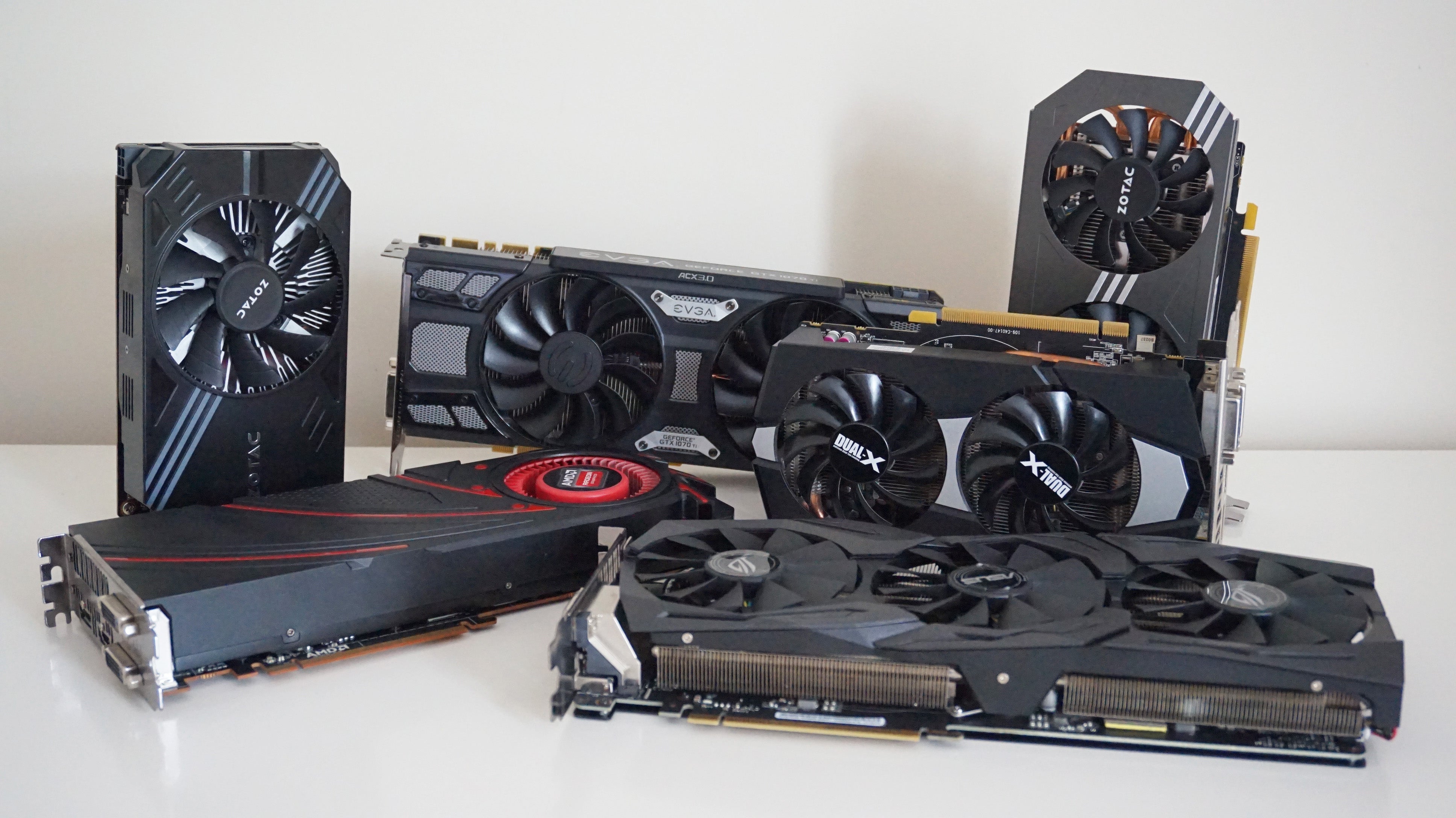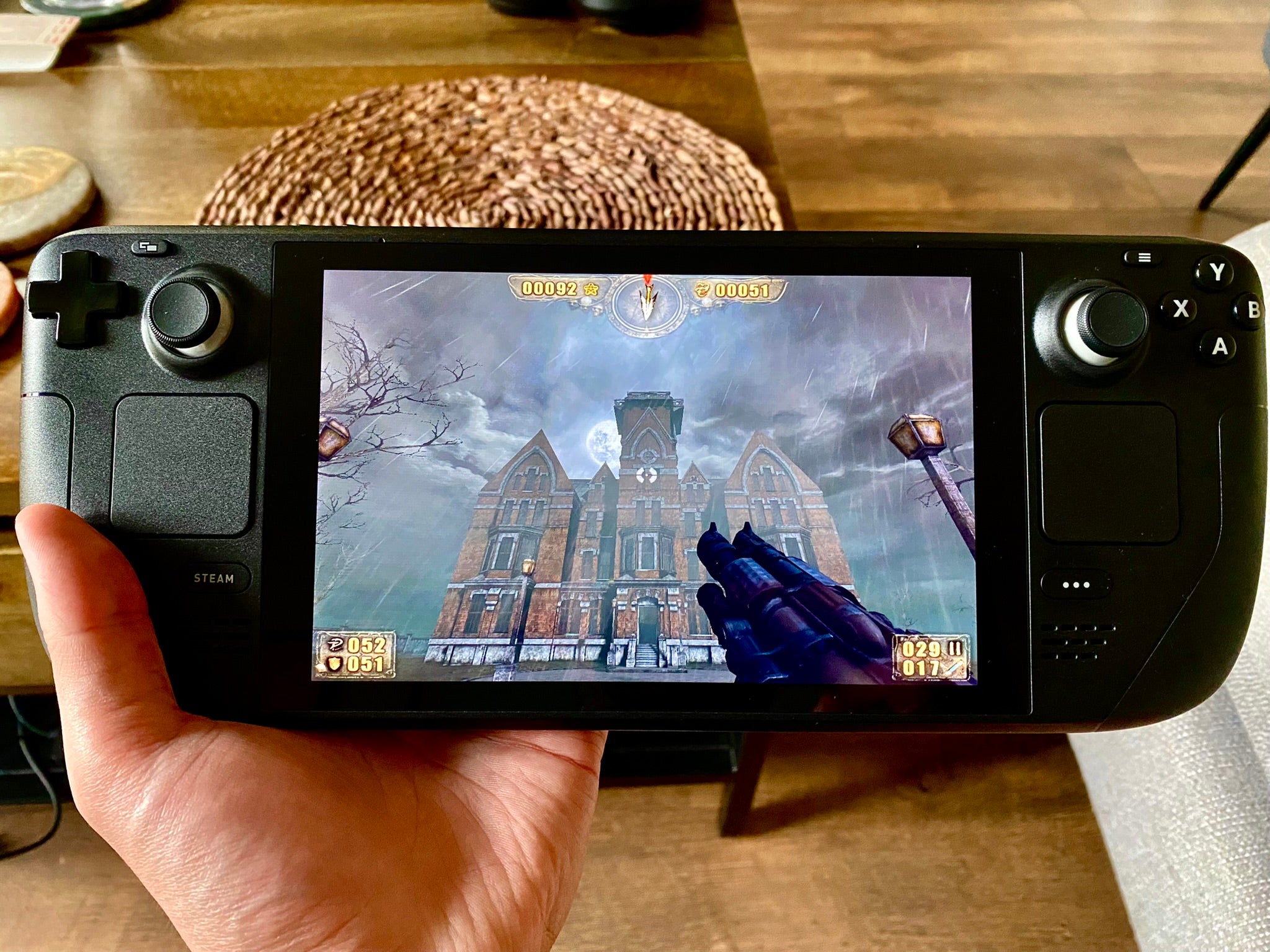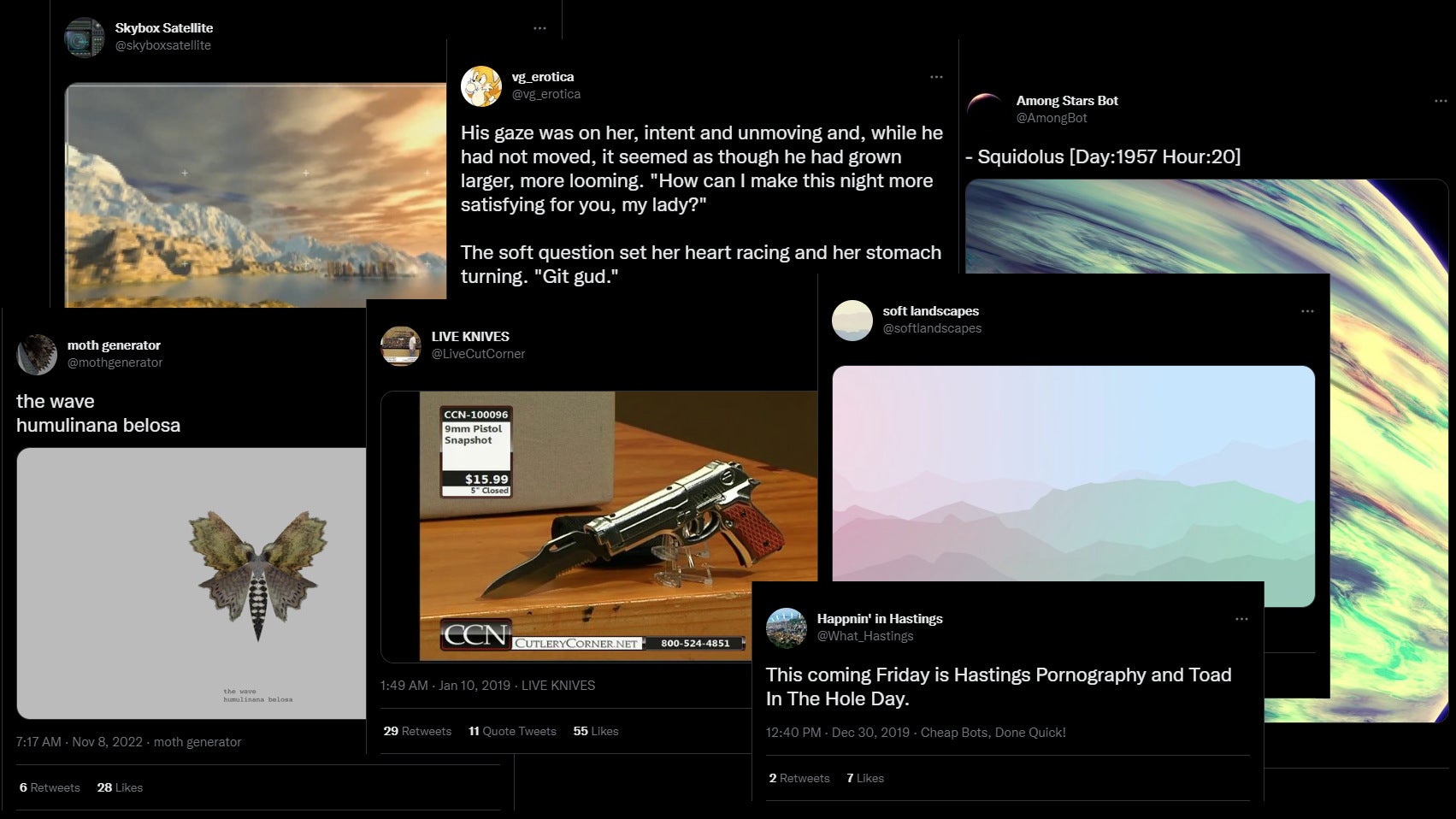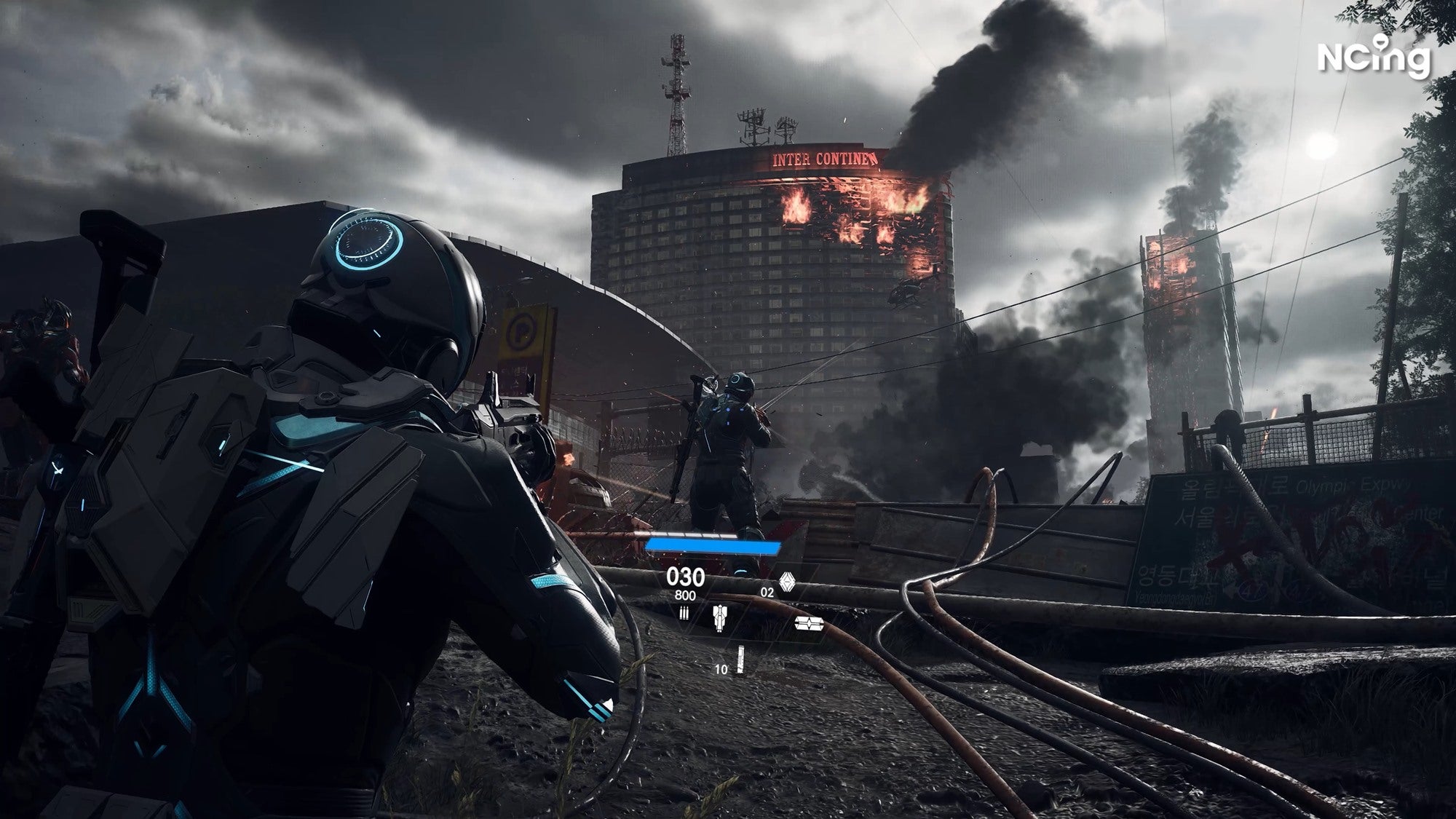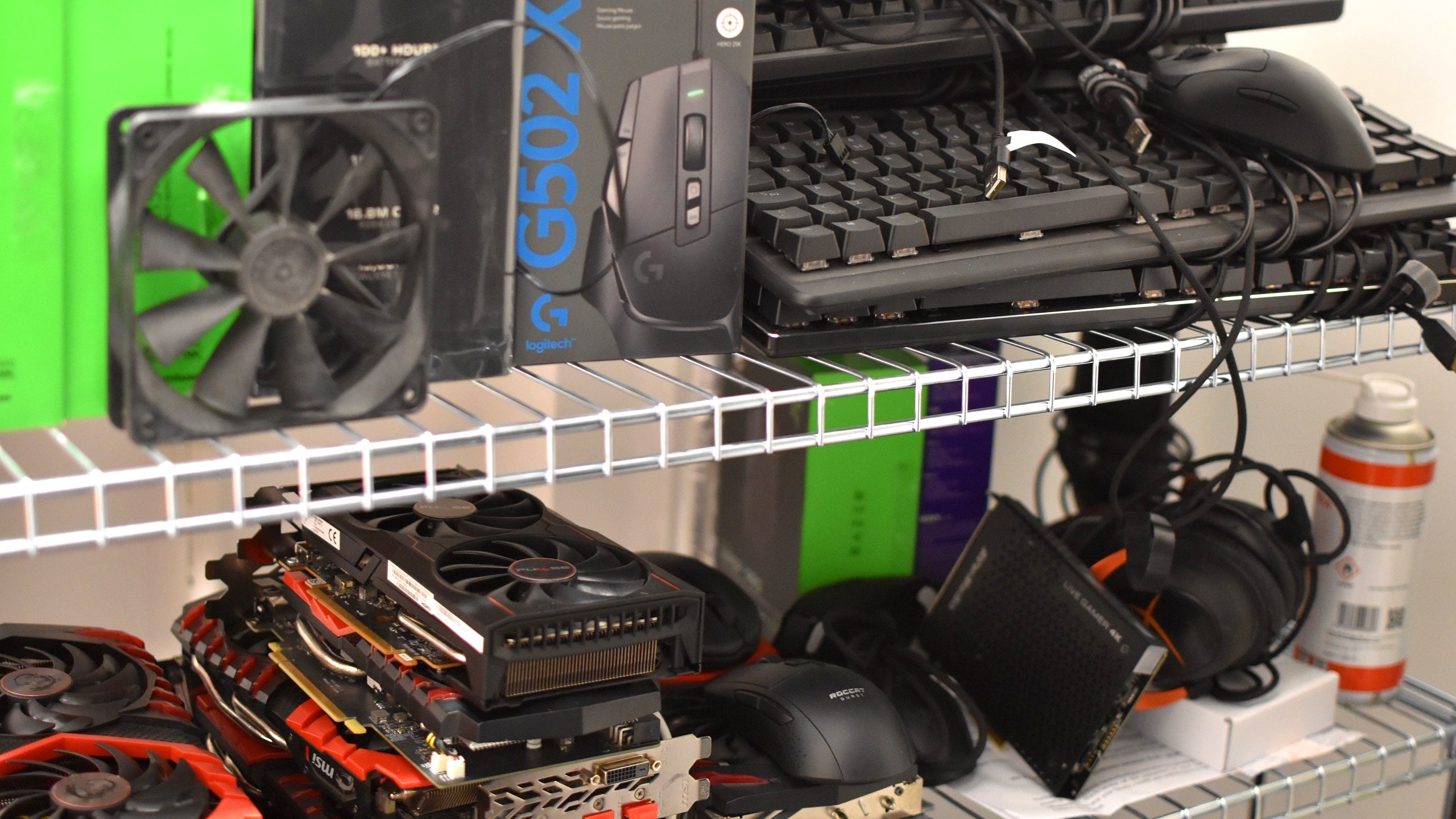Best graphics cards 2022: the top gaming GPUs
Our top graphics card picks for 1080p, 1440p and 4KWhen is the best graphics card not the best graphics card? When it’s the Nvidia GeForce RTX 4090. This behemoth of a PC component is by far the fastest GPU on the market, with or without the framerate-roiding of DLSS, but with prices starting at £1679 / $1599 it just doesn’t make economic sense. Even if you’re in need of something to light up a pixel-dense 4K monitor.
In truth, graphics cards in something of a transition period. The new Intel Arc range has produced some interesting but unessential lower-end options, and of course there’s the RTX 4090, the imminent RTX 4080, and AMD’s just-announced Ryzen 7000 cards if you can pay megabucks. That huge space in the middle, though? That realm of 1440p and high-speed 1080p? Bit awkward, that. You basically have the choice between waiting and crossing your fingers for more affordable RTX 40/ RX 7000 models, or taking the known quantity of an existing GPU in the knowledge that a newer, better-equipped replacement might be here in a few months.
At this point in time, I personally lean more towards the “wait and see” school of thought. Still, we can only recommend cards that we’ve tested, which in turn can only happen when they actually exist outside of hypotheticals. This list, then, is your guide to the best graphics cards you can buy right now – feel free to call upon it in the event that you just can’t wait for, or indeed can’t afford, a GPU from a newer generation.
The best graphics cards for gaming
- Nvidia GeForce RTX 3050
- Nvidia GeForce RTX 3060
- Nvidia GeForce RTX 3060 Ti
- Nvidia GeForce RTX 3070
- Nvidia GeForce RTX 3080
Nvidia GeForce RTX 3050
The best cheap 1080p graphics card

“Cheap” has become an even more relative term among graphics cards, unfortunately, but here's a fact: the Nvidia GeForce RTX 3050 is the cheapest GPU on the market to offer Nvidia’s RTX features. Namely, ray tracing and DLSS support. Even last-gen cards like the RTX 2060 can set you back more, and while the competing Radeon RX 6500 XT is even more affordable, I found AMD's GPU performs really quite poorly in comparison to the RTX 3050.
Granted, the MSI-built RTX 3050 I tested costs £350 / $330, and for just a bit more you could upgrade to an RTX 3060. But if you find a cheaper model, which are plentiful, you’d get a far better deal for this highly capable 1080p GPU (which also has some limited 1440p capability). Especially thanks to DLSS, which is essentially free FPS, and is missing from both AMD’s cheaper cards and the RTX 3050’s own predecessors, like the GTX 1650 Super.
One other point in the RTX 3050's favour? It's in stock far more often than most GeForce RTX cards, which should give you more freedom to shop around for the best prices.
What we like:
✔️ Can get most games to 60fps on high/maximum settings at 1080p
✔️ DLSS and ray tracing support
✔️ Faster than the AMD Radeon RX 6500 XT
Read more in our Nvidia GeForce RTX 3050 review
Nvidia GeForce RTX 3060
The best 1080p graphics card
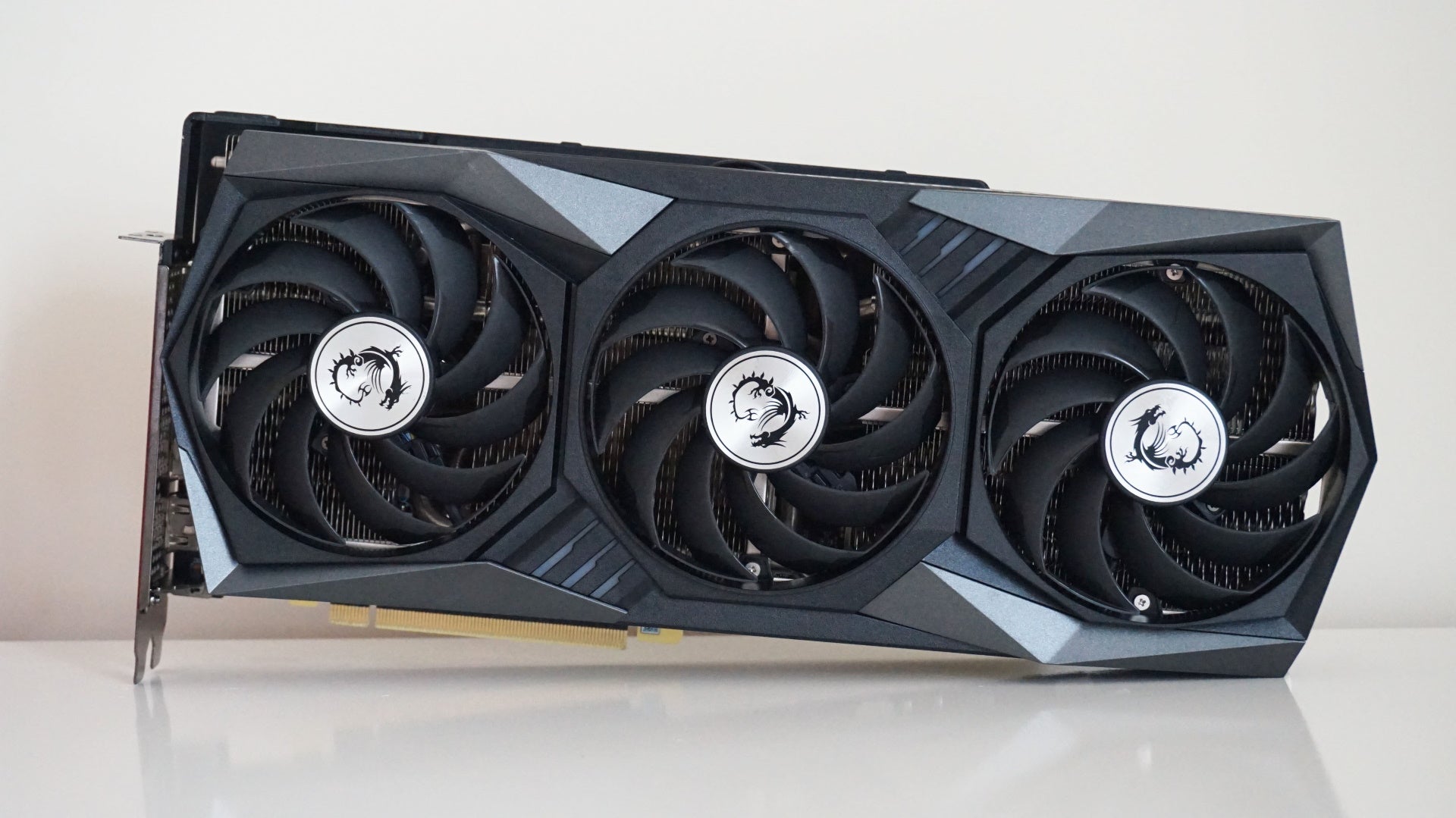
Provided you can spare the cash over the RTX 3050, the Nvidia GeForce RTX 3060 is currently your best bet for combining affordability with 1080p performance. You still get DLSS and ray tracing support, and with the latter, you probably won't need to cut as many other quality settings to maintain a good frame rate as you would on the RTX 3050.
At 1920x1080, you can generally expect average framerates to exceed 60fps, even when deploying maxed-out graphical settings. The RTX 3060 even has some 1440p chops, though the souped-up RTX 3060 Ti (below) is better suited for Quad HD duties.
What we like:
✔️ 60fps speeds on max settings at 1080p
✔️ Can handle High settings at 1440p too
✔️ Lower power usage than the RTX 3060 Ti
Read more in our Nvidia GeForce RTX 3060 review
Nvidia GeForce RTX 3060 Ti
The best 1440p graphics card
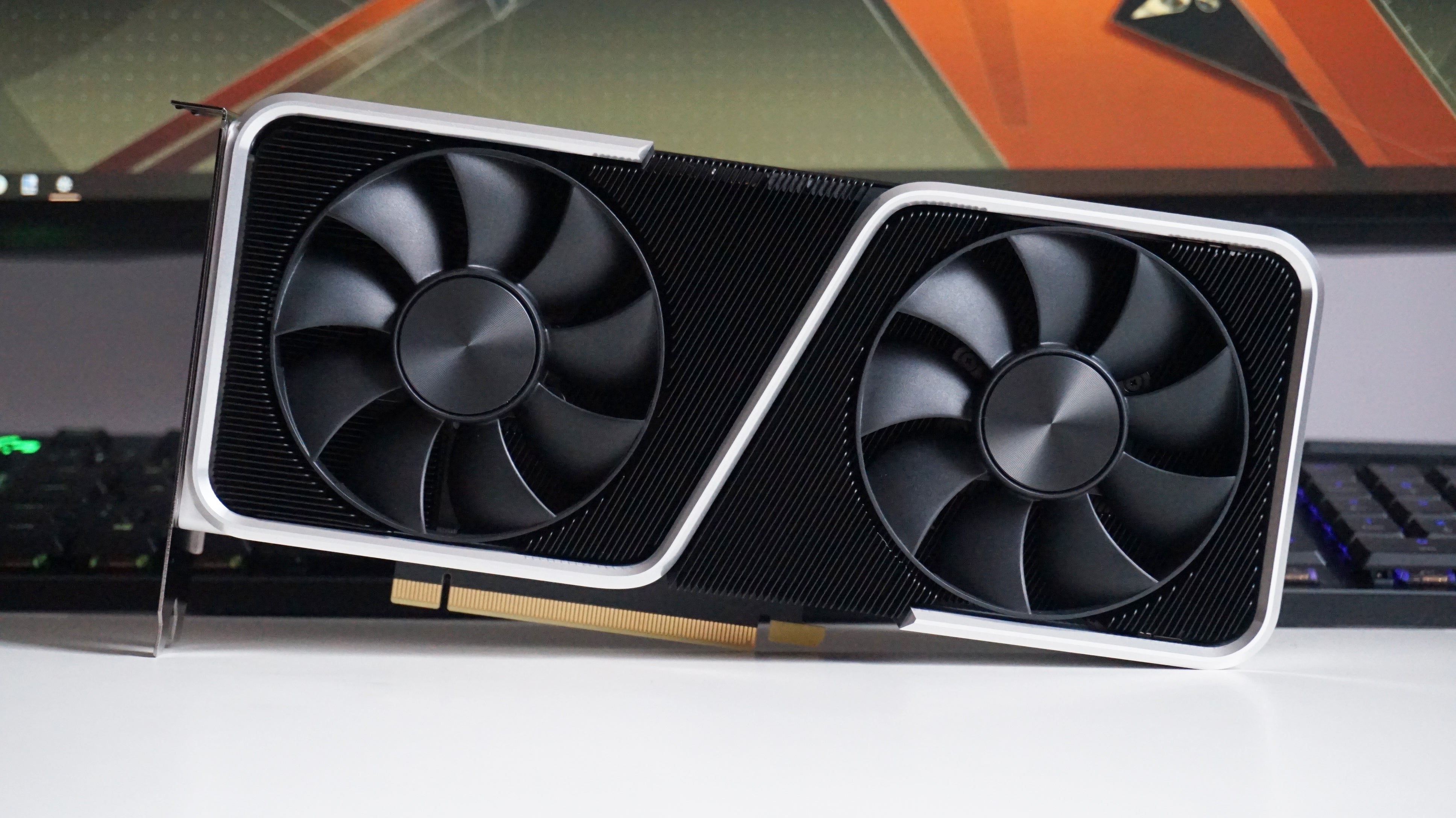
Playing games on max settings at 2560x1440 requires a lot more horsepower than it does at 1920x1080, but Nvidia's GeForce RTX 3060 Ti is currently the card to beat for 60fps speeds on maximum settings. It does seem to be one of the more stubborn graphics cards in terms of price drops, but if you can catch it in a sale, you won't regret the purchase. Not only is it capable of hitting 60fps speeds on max settings in today's latest games, such as Assassin's Creed Valhalla, but it's also capable of delivering frame rates upwards of 70-80fps in slightly older blockbusters as well.
The RTX 3060 Ti also has significantly improved ray tracing performance compared to Nvidia's previous generation of RTX cards, meaning you can actually play today's crop of ray tracing games at 1440p instead of having to settle for 1080p. If ray tracing is particularly important to you and you've got the budget, you may want to think about the RTX 3070 instead, though, especially if you've got a high refresh rate monitor. For more info and benchmark results, check out our RTX 3060 Ti vs RTX 3070 comparison.
What we like:
✔️ Delivers 60fps speeds on max settings at 1440p in all of today's biggest games
✔️ More than double the performance of the GTX 1070
✔️ Offers RTX 2080 Super levels of power for a lot less
Read more in our Nvidia GeForce RTX 3060 Ti review
Nvidia GeForce RTX 3070
The best graphics card for ultrawide gaming monitors

Playing ultrawide PC games is almost as demanding as playing them at 4K, but thankfully the lower 3440x1440 resolution of most ultrawide monitors means you can get away with a slightly cheaper graphics card as a result. For us, that's the Nvidia GeForce RTX 3070, although an older RTX 2070 Super or AMD's Radeon RX 6800 will also get the job done as well based on our testing.
In fairness, Nvidia's GeForce RTX 3080 is another fine choice for ultrawide monitor owners, and those determined to play games at the highest possible settings and the fastest refresh rates will no doubt get a lot of benefit from its extra horsepower. For us, though, the cheaper RTX 3070 is much better value overall, capable of delivering highly playable frame rates at 3440x1440 and below, and it's probably the closest thing to a "cheap 4K graphics card" you're going to get, too, if you don't have the budget for the RTX 3080.
Indeed, the RTX 3070 is more than capable of hitting 60fps in most of today's big games that support ultrawide resolutions, and it's got buckets of power for playing games at a regular, 16:9 resolution of 2560x1440, too, when games don't have any ultrawide resolution support. Indeed, the RTX 3070 can hit speeds of at least 70-80fps on max settings at 2560x1440, and 60fps at 4K on Medium to High settings. It's a great card for ray tracing at 1440p as well, making it one of the most versatile graphics cards around for high resolution monitor owners.
Nvidia has also launched a slightly more powerful (and more expensive) alternative in the RTX 3070 Ti, though the performance is difference is so small that the standard RTX 3070 remains the better deal.
What we like:
✔️ Great 1440p performance with 80fps+ on max settings
✔️ 4K 60fps performance on High quality settings in most AAA games
✔️ More or less doubles the performance of the GTX 1070
Read more in our Nvidia GeForce RTX 3070 review
Nvidia GeForce RTX 3080
The best graphics card for 4K
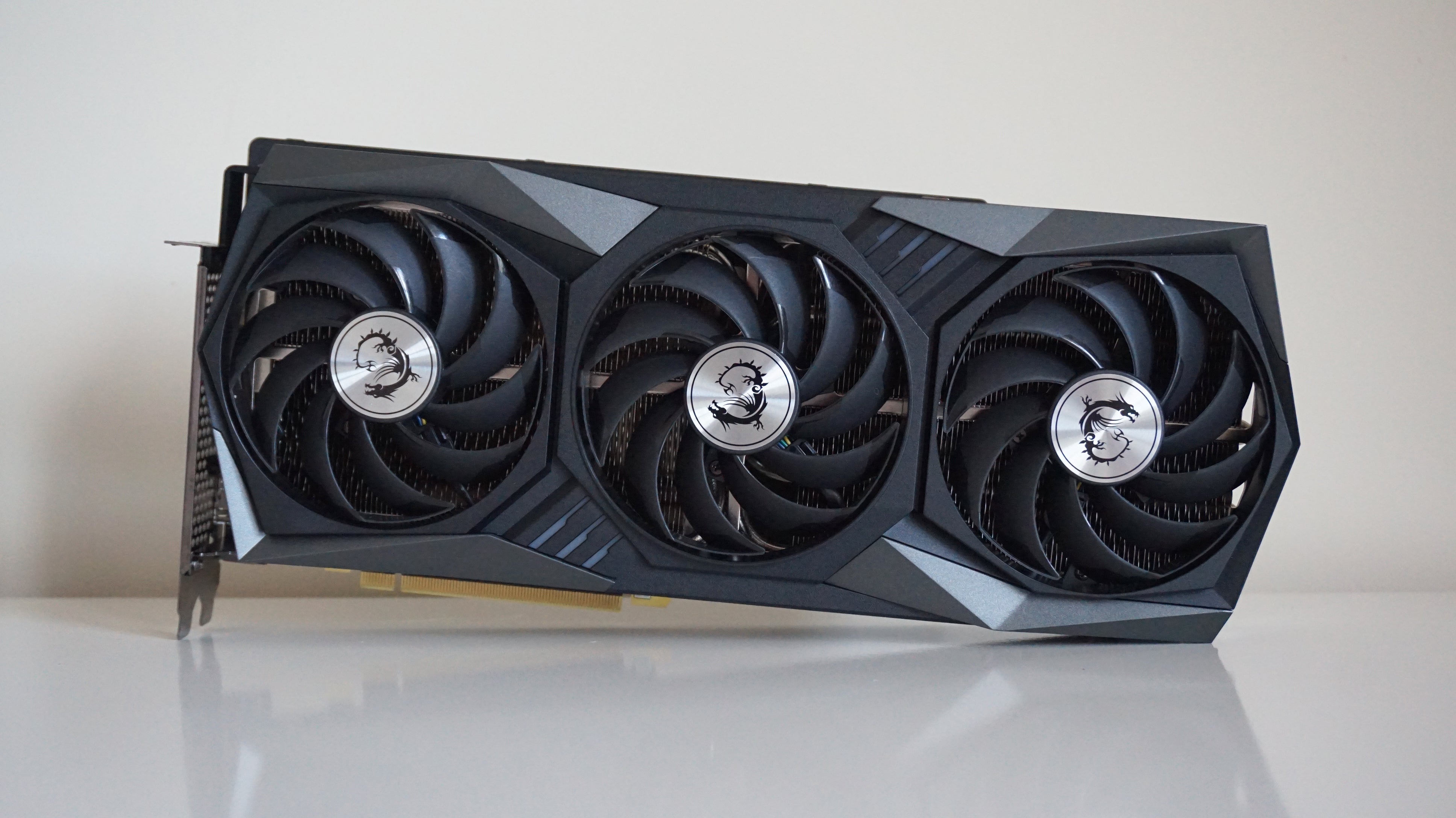
The Nvidia GeForce RTX 3080 actually has a growing list of both newer and higher-ranking Nvida GPUs above it, from the RTX 3080 Ti to the RTX 4090. But while it's also very much a premium GPU, you don't really need anything pricier for 4K. It's capable of delivering a smooth 60fps on max settings in pretty much all of today's big GPU-melters (there are, naturally, a couple of exceptions but they're few and far between), and outperforms its closest 4K-ready AMD rival, the Radeon RX 6800 XT.
AMD's offering is cheaper than the RTX 3080, at least on average, but it's just not quite as fast, both in terms of raw performance and how it fares with ray tracing. The RTX 3080 also has the benefit of Nvidia's DLSS tech, to help boost its ray tracing performance in compatible games. AMD's equivalent, FidelityFX Super Resolution, can provide similar FPS gains, but it neither looks as good as DLSS nor has its own, smart anti-aliasing. As a result, FSR isn't as much of a draw for AMD cards as DLSS is for Nvidia's, especially since FSR works on both manufacturers' cards anyway. DLSS, by contrast, is only available with an Nvidia RTX GPU.
Unlike most of the other graphics cards on this list, the RTX 3080 actually has a direct replacement – the RTX 4080 – and if you’re reading this after November 16th, then it’s already on sale. It’s not available for testing at the time of writing, though considering it starts at £1269 / $1199, it would need to be obscenely powerful to truly make the RTX 3080 obsolete.
What we like:
✔️ 4K 60fps performance on max settings in almost every game going
✔️ Significantly improved ray tracing and DLSS performance over Nvidia's RTX 20 series
✔️ Sets the benchmark for next-gen 4K graphics cards
Read more in our Nvidia GeForce RTX 3080 review
Frequently asked questions
Why are some graphics cards so expensive?If you've tried to buy a new graphics card since about September 2020, you'll know how hard it can be to get hold of one, and how nigh-impossible it is to do so at a fair price. Only now is the market correcting course, though some GPUs - like the RTX 3080 - are still often listed well above the RRP.
The good news is that graphics cards are no longer as useful to large-scale cryptocurrency mining operations as they once were, so without the demand of miners looking to make a quick, environmentally devasting buck, prices and stock availability have lowered and risen respectively. Some cards, however, are still feeling the effects of a series of manufacturing delays brought about by the Covid-19 pandemic, so we’re not completely back to normal yet.
Which graphics cards have ray tracing?Ray tracing can be a huge upgrade to how your games handle lighting, shadows and reflections, but you need compatible GPU to take advantage of it. Right now, that includes all of Nvidia's RTX 20 series, 30 series, and 40 series GPUs, and AMD's Radeon RX 6000 cards (plus the RX 7000 series once it launches in December 2022). On the Nvidia side, that includes everything from the RTX 2060 up to the newest RTX 4090, while AMD's ray tracing GPU range starts at the RX 6400 and ends at the RX 6950 XT, soon to be replaced by the RX 7900 XTX. No, that's not a typo. They really are just adding X's.
Intel have also released their first Arc graphics cards, bringing with them ray tracing support and Intel XeSS: an upscaling system similar to DLSS and FSR.
Which is better, AMD or Nvidia?An age old question, the answer to which seems to change with every generation of new GPUs. Right now, Nvidia have a wider range of compelling options across all resolutions, from the RTX 3050 and RTX 3060 for 1080p to the RTX 3080 for 4K.
In the past, AMD graphics cards have tended to be cheaper than Nvidia equivalents. That kind of went out the window when industry-wide prices went so screwy in 2020, though it could be telling that AMD’s latest flagships – the RX 7900 XT and RX 7900 XTX – are hundreds of dollars cheaper than the RTX 4080 and RTX 4090.
AMD and Nvidia are also narrowing on features. DLSS produces consistently better-quality upscaling than FSR, but AMD FSR 2.0 (also known simply as FSR 2) makes the differences harder to notice. That said, FSR itself isn’t a reason to buy a Radeon card specifically, as it’s available on all modern GPUs, Nvidia’s including. DLSS does need an RTX card to work, so if you want the best upscaling, there’s a much stronger reason to choose Nvidia.

